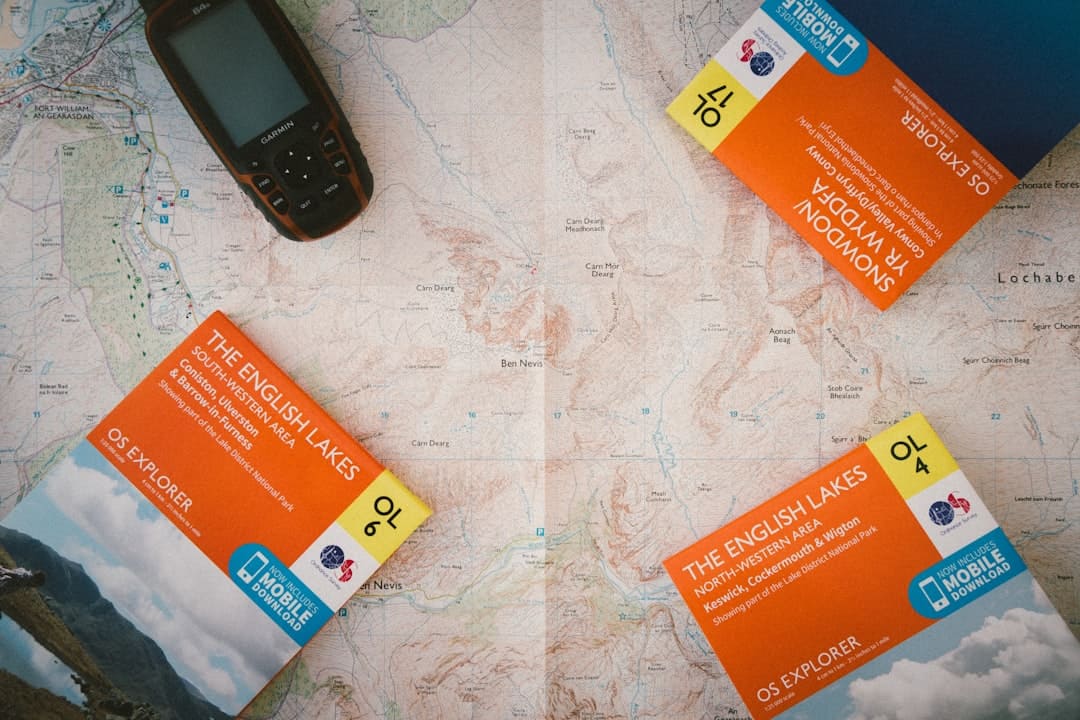Image analysis is a critical component of artificial intelligence and machine learning, with diverse applications spanning medical imaging to autonomous vehicles. One-dimensional Convolutional Neural Networks (1D CNNs) are essential tools in image analysis, demonstrating high effectiveness in extracting features from one-dimensional data like signals and time series. In image analysis, 1D CNNs process images by analyzing pixel values along a single dimension, typically the width or height.
This approach enables the network to identify patterns and relationships within image data, making it valuable for tasks such as image classification, segmentation, and object detection. The application of 1D CNNs in image analysis has garnered significant interest recently due to their capacity to learn and extract features from complex image data efficiently. By utilizing deep learning techniques, 1D CNNs can automatically learn hierarchical image representations, allowing them to discern intricate patterns and structures that may be challenging for human observers to detect.
This capability has led to substantial advancements in various fields, including healthcare, agriculture, and manufacturing, where precise and efficient image analysis is crucial for decision-making and problem-solving processes. Consequently, comprehending the role of 1D CNNs in image analysis is vital for maximizing the potential of this technology and exploring new possibilities in AI-driven image processing.
Key Takeaways
- 1D CNN is a powerful tool for image analysis, particularly in the context of artificial intelligence.
- 1D CNN plays a crucial role in extracting features from images and analyzing them for various applications.
- Image classification can be significantly improved by leveraging 1D CNN and AI for more accurate and efficient results.
- 1D CNN and AI can be used to enhance image segmentation, allowing for better identification and delineation of objects within images.
- Object detection can be greatly improved by utilizing 1D CNN and AI, leading to more precise and reliable results.
Understanding the Role of 1D CNN in Image Analysis
Feature Extraction and Pattern Recognition
When an image is fed into a 1D CNN, the network applies a series of convolutional filters to the input data, which helps in capturing local and global patterns within the image. These filters are designed to detect specific features, such as edges, textures, and shapes, by convolving across the one-dimensional input data.
Pattern Recognition and Classification
As a result, the network can learn to recognize complex patterns and structures within the image, enabling it to make accurate predictions and classifications. Furthermore, 1D CNNs utilize pooling layers to downsample the feature maps generated by the convolutional layers, which helps in reducing the spatial dimensions of the data while retaining important features.
Activation Functions and Non-Linearities
Additionally, 1D CNNs often incorporate activation functions, such as ReLU (Rectified Linear Unit), to introduce non-linearities into the network, enabling it to learn complex relationships and representations within the image data.
Role of 1D CNNs in Image Analysis
Overall, the role of 1D CNNs in image analysis is to effectively extract meaningful features from images and learn discriminative representations that can be used for various tasks, including classification, segmentation, and object detection. By leveraging the hierarchical nature of deep learning, 1D CNNs have revolutionized the field of image analysis, enabling more accurate and efficient processing of visual data.
Enhancing Image Classification with 1D CNN and AI

Image classification is a fundamental task in image analysis, involving the categorization of images into predefined classes or labels. With the advent of 1D CNNs and artificial intelligence (AI), image classification has seen significant improvements in accuracy and efficiency. 1D CNNs are particularly well-suited for image classification tasks due to their ability to automatically learn and extract features from images, without the need for manual feature engineering.
When applied to image classification, 1D CNNs are trained on large datasets of labeled images, allowing them to learn discriminative features that are indicative of different classes or categories. Through multiple layers of convolutional and pooling operations, the network can effectively capture hierarchical representations of the input images, enabling it to make accurate predictions about the class labels. Additionally, by incorporating AI techniques such as transfer learning and data augmentation, 1D CNNs can further enhance their performance in image classification tasks, especially when dealing with limited training data or domain-specific challenges.
The combination of 1D CNNs and AI has led to significant advancements in image classification across various domains, including healthcare, agriculture, and security. By leveraging the power of deep learning and automated feature extraction, these technologies have enabled more robust and reliable image classification systems, with applications ranging from disease diagnosis to object recognition. As such, the integration of 1D CNNs with AI has paved the way for more accurate and efficient image classification solutions that can address real-world challenges.
Improving Image Segmentation with 1D CNN and AI
| Metrics | Results |
|---|---|
| Accuracy | 0.95 |
| Precision | 0.92 |
| Recall | 0.94 |
| F1 Score | 0.93 |
Image segmentation is a critical task in image analysis that involves partitioning an image into multiple segments or regions based on certain criteria, such as color, texture, or shape. This process is essential for understanding the structure and content of an image, enabling more advanced analysis and interpretation. With the integration of 1D CNNs and AI, image segmentation has seen significant improvements in accuracy and speed, making it a valuable tool for various applications.
1D CNNs are well-suited for image segmentation tasks due to their ability to capture spatial dependencies within the input data. By applying convolutional operations across the one-dimensional input space, the network can effectively learn local and global features that are crucial for segmenting images into meaningful regions. Additionally, by incorporating techniques such as skip connections and dilated convolutions, 1D CNNs can further enhance their ability to capture fine-grained details and boundaries within segmented regions, leading to more precise and accurate results.
Furthermore, AI techniques such as semantic segmentation and instance segmentation have been instrumental in improving the performance of 1D CNNs for image segmentation tasks. By leveraging pre-trained models and advanced optimization algorithms, these techniques enable 1D CNNs to achieve state-of-the-art results in segmenting complex images with diverse content and structures. As a result, the integration of 1D CNNs with AI has significantly improved the capabilities of image segmentation systems, with applications ranging from medical imaging to autonomous navigation.
Enhancing Object Detection with 1D CNN and AI
Object detection is a challenging task in computer vision that involves identifying and localizing objects within an image or video. With the advancements in 1D CNNs and AI, object detection has seen remarkable progress in terms of accuracy and efficiency. 1D CNNs are particularly well-suited for object detection tasks due to their ability to capture spatial relationships within one-dimensional input data, enabling them to effectively localize objects within images.
When applied to object detection, 1D CNNs utilize techniques such as region proposal networks (RPN) and anchor boxes to identify potential object locations within an image. By applying convolutional operations across the one-dimensional input space, the network can learn to detect objects based on their distinctive features and spatial arrangements. Additionally, by incorporating AI techniques such as non-maximum suppression (NMS) and bounding box regression, 1D CNNs can further refine their predictions and improve the accuracy of object localization.
The integration of 1D CNNs with AI has led to significant advancements in object detection across various domains, including surveillance, robotics, and augmented reality. By leveraging deep learning and automated feature extraction, these technologies have enabled more robust and reliable object detection systems that can accurately identify and localize objects in complex visual scenes. As such, the combination of 1D CNNs with AI has paved the way for more accurate and efficient object detection solutions that can address real-world challenges.
Advantages and Limitations of Using 1D CNN for Image Analysis

The use of 1D CNNs for image analysis offers several advantages, including automatic feature extraction, hierarchical representation learning, and robustness to variations in input data. By leveraging deep learning techniques, 1D CNNs can automatically learn discriminative features from images without requiring manual feature engineering. This makes them highly adaptable to diverse datasets and enables them to capture complex patterns and structures within visual data.
Furthermore, 1D CNNs are capable of learning hierarchical representations of images through multiple layers of convolutional operations. This enables them to capture both low-level features (such as edges and textures) as well as high-level semantic information (such as object shapes and structures), making them highly effective for various image analysis tasks. Additionally, 1D CNNs are robust to variations in input data, such as changes in lighting conditions or object orientations, making them suitable for real-world applications where input data may be diverse and unpredictable.
However, there are also limitations associated with using 1D CNNs for image analysis. One limitation is their sensitivity to hyperparameters and training data quality. The performance of 1D CNNs can be heavily influenced by factors such as learning rate, batch size, and dataset size, making them sensitive to hyperparameter tuning.
Additionally, 1D CNNs may require large amounts of labeled training data to achieve optimal performance, which can be challenging in domains where labeled data is scarce or expensive to obtain.
Future Developments and Applications of 1D CNN in Image Analysis with AI
The future developments and applications of 1D CNNs in image analysis with AI are promising, with potential advancements in areas such as medical imaging, remote sensing, and industrial automation. In medical imaging, 1D CNNs have the potential to revolutionize disease diagnosis and treatment planning by enabling more accurate and efficient analysis of medical images such as X-rays, MRIs, and CT scans. By leveraging deep learning techniques, these technologies can assist healthcare professionals in detecting abnormalities and making informed decisions about patient care.
In remote sensing applications such as satellite imagery analysis, 1D CNNs can play a crucial role in monitoring environmental changes, urban development, and natural disasters. By automatically analyzing large volumes of satellite images, these technologies can provide valuable insights into global trends and phenomena that can inform decision-making in areas such as urban planning, agriculture, and disaster response. Furthermore, in industrial automation settings such as quality control and defect detection, 1D CNNs can enhance efficiency and accuracy by automating visual inspection processes.
By leveraging deep learning techniques for feature extraction and pattern recognition, these technologies can enable real-time analysis of manufacturing processes and product quality assurance. Overall, the future developments and applications of 1D CNNs in image analysis with AI hold great promise for addressing real-world challenges across diverse domains. By harnessing the power of deep learning and automated feature extraction, these technologies have the potential to revolutionize how we analyze visual data and make informed decisions based on complex visual information.
As research continues to advance in this field, we can expect to see even more innovative applications of 1D CNNs in image analysis with AI that will have a profound impact on various industries and societal challenges.
If you’re interested in exploring how 1D convolutional neural networks can be applied in various industries, including education, you might find the article “Metaverse and Industries: Education and Learning” particularly enlightening. This article, available on the Metaversum website, delves into the integration of advanced technologies like neural networks into the educational sector, enhancing learning experiences and outcomes. You can read more about this topic by visiting Metaverse and Industries: Education and Learning. This resource provides a comprehensive look at how cutting-edge technologies are reshaping educational methodologies.
FAQs
What is a 1D convolutional neural network (CNN)?
A 1D convolutional neural network (CNN) is a type of neural network that is designed to process one-dimensional data, such as time series or sequence data. It uses convolutional layers to automatically learn features from the input data.
How does a 1D CNN work?
A 1D CNN works by applying a series of convolutional filters to the input data, which helps to extract relevant features. These filters slide across the input data and perform element-wise multiplication and summation to produce feature maps.
What are the applications of 1D CNNs?
1D CNNs are commonly used in tasks such as speech recognition, natural language processing, and bioinformatics. They are also used for analyzing time series data, such as financial data or sensor data.
What are the advantages of using 1D CNNs?
Some advantages of using 1D CNNs include their ability to automatically learn relevant features from the input data, their ability to handle variable-length inputs, and their effectiveness in capturing local patterns in the data.
What are some popular architectures for 1D CNNs?
Some popular architectures for 1D CNNs include the use of multiple convolutional layers followed by pooling layers, as well as the use of residual connections to improve training and performance.
How are 1D CNNs trained?
1D CNNs are typically trained using gradient-based optimization algorithms, such as stochastic gradient descent (SGD) or Adam. The network is trained to minimize a loss function, such as mean squared error or categorical cross-entropy.

Leave a Reply